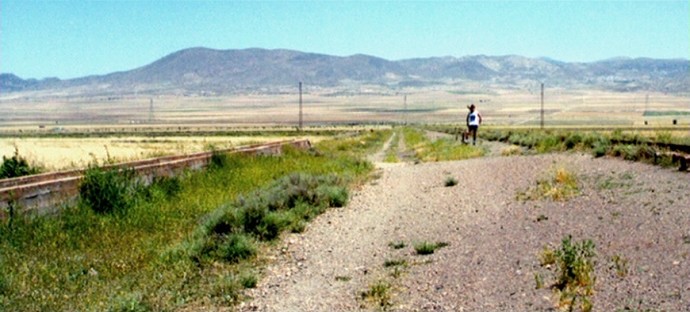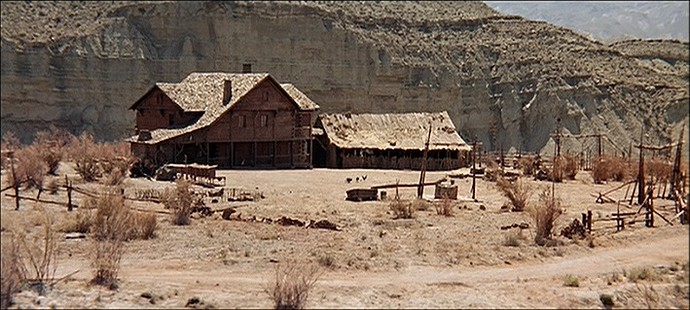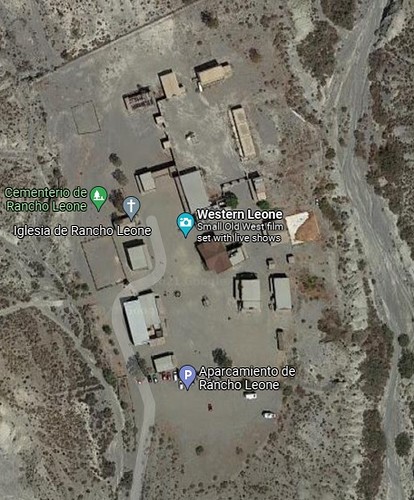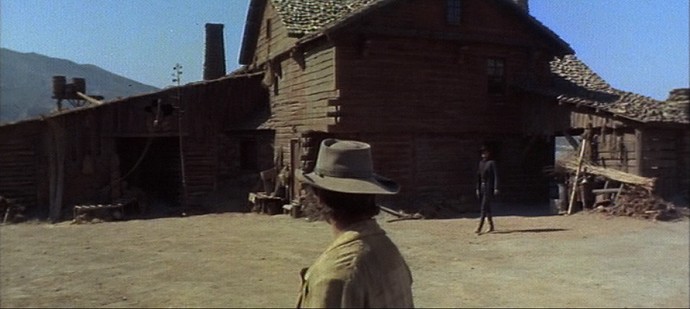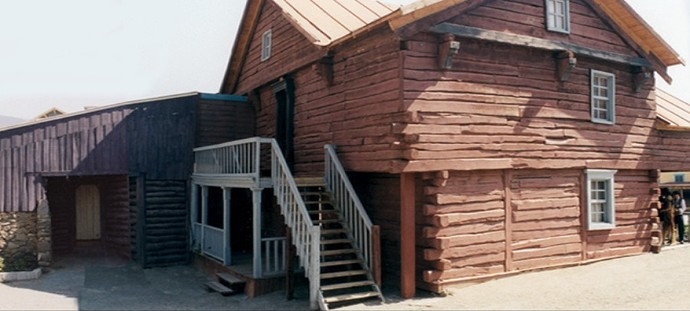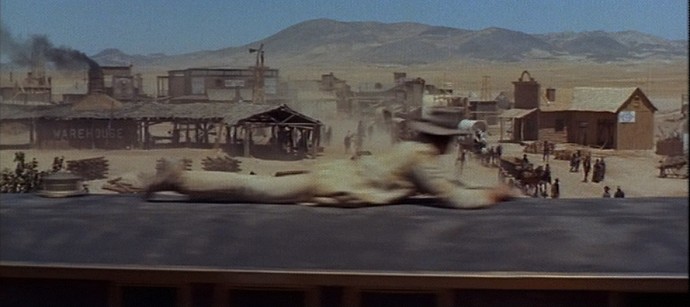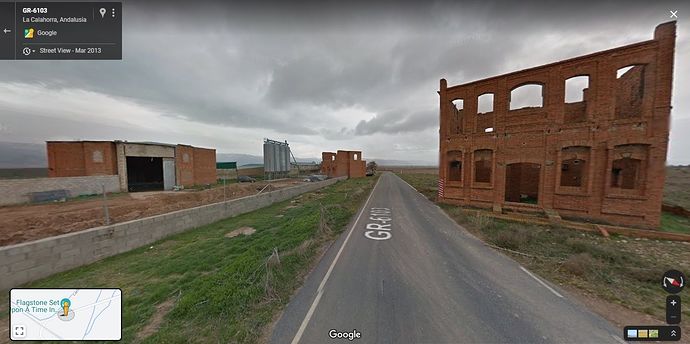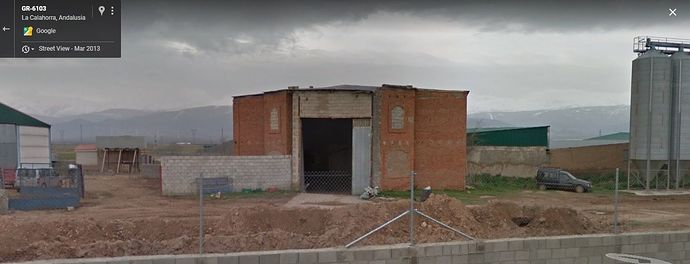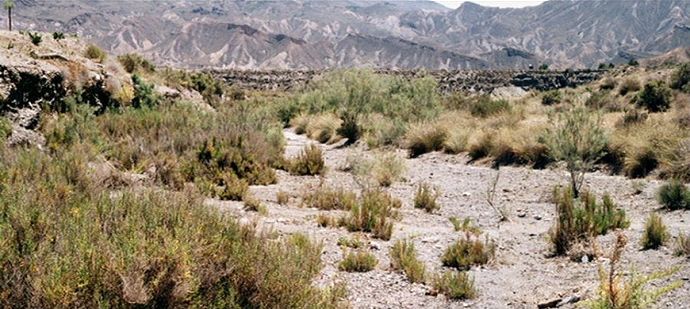- Flagstone - Lacalahorra Station, Guadix
For the main town in OUATITW, Leone turned his back on El Paso which had been built for FAFDM, and which served as a multitude of different towns in GBU, and had a new place built not far from Cattle Corner. This was principally to accomodate the railroad requirements, since our first introduction to the town of Flagstone is when we meet Claudia Cardinale’s Jill, “The whore with the heart of gold” arriving by train.
I found Flagstone in 1972, travelling up to Guadix because I had read in a film magazine that some of Leone’s FISTFUL OF DYNAMITE had been shot there. It was a narrow straight road across the yellow flattened plains of Granada province that took me to the point midway between the station of Lacalahorra on my right, and the town of Lacalahorra on my left, which was overlooked by a conical hill surmounted by a Medieval Castle that was to serve well in John Milius’ THE WIND AND THE LION. The railway line that connected Lacalahorra town and station just crossed the tarmac road, without barrier, and it was here I stopped to admire the castle, and then gaze down towards Lacalahorra station where there was something strange and interesting about the mass of buildings that surrounded it. Quickly unsheathing my telescope, I was rewarded with the unmistakeable confirmation that I was staring at a complete Western town, and on the railway line that passed in front of it was a row of Western-styled railway carriages, which I didn’t recognise at the time as being from any particular film, but which became incredibly familiar a couple of weeks later when I returned to England and saw RED SUN. In the film there was actually one extra carriage, and I was thinking “what happened to that one?”, when suddenly there’s an attack on the train by Alain Delon’s bandit gang, and the superfluous carriage gets blown up.
In 1972, the town was in a good state of repair. It had been built along the southern side of the main railway line that connected Almeria to Guadix, on the opposite side to the small station of Lacalahorra. Through the centre of town ran a dirt road, heading southwest into the mountains, and according to my map, towards a mining area. The two halves of the town that straddled the dirt road had been ringed by a barbed wire fence to prevent anybody wandering inside, and I noticed some guy in a crumpled dark suit seated outside the saloon, who was probably guarding the place. Fortunately, I was on the move, so he hardly paid me any attention, giving me time to drive through, and then circle behind the buildings at the far end to hide my car at the southern tip of the town. I then quickly got my cameras together, stepped over the fence and began grabbing shots. As I moved around, I noted that the town guardian had finally spotted me, so I moved in the opposite direction to him, pretending not to see him, but taking great care to always circle out of his way. When he finally caught up to me, it was to tell me that it was forbidden to take photographs here. So I assumed an air of shock and surprise, and apologised profusely, thanking him for warning me, and then left with about two rolls of exposed film.
I guess if I’d shown him a few dollar bills, he would have told me that it was okay to wander around after all.
I returned to Almeria in 1974 and was quite excited by the fact that a local cinema was showing a film called MY NAME IS NOBODY, which I had never heard about. The poster said it was “Presented by Sergio Leone”, so I set aside an afternoon and went to watch it.
Imagine my surprise in finding that Flagstone had now become a main feature in this film.
So it was with mounting excitement that the very next day, I drove out towards Guadix and arrived at the location to see it for myself.
I already knew that there might be trouble over me attempting to take photographs here after the experience last time, but forearmed with that knowledge, I completely outwitted the guardian this time and got all the shots I wanted. The best he could do was to catch up with me breathlessly after I’d finished, by which time I was already throwing my car into gear and spraying him with dust as I barrelled along the dirt track back towards the main road.
And everything was here. The Hall of Mirrors, the rotating boxing figure, all sorts of carnival detritus. It really was a breathtaking experience. Watch the film one day, stand in the location the next, feeling the hot sun, blinking against the gleaming light, breathing the fresh air, and thinking you were heaven.
Google sends you to Flagstone now. You have to negotiate a spaghetti junction of circling roads to find the correct exit rather than the simple crossroads that I had. I think Don circled it at least twice while I made up my mind. The huge area of plastic greenhouses should help.
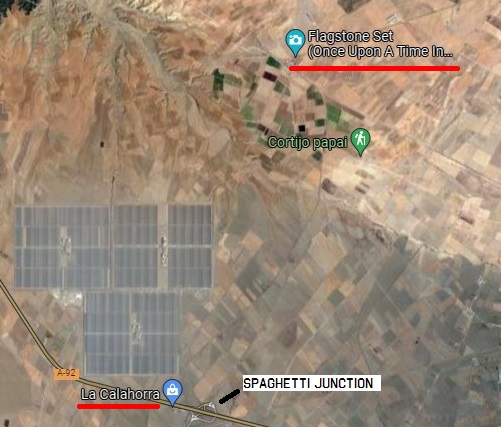
What’s left of it:


